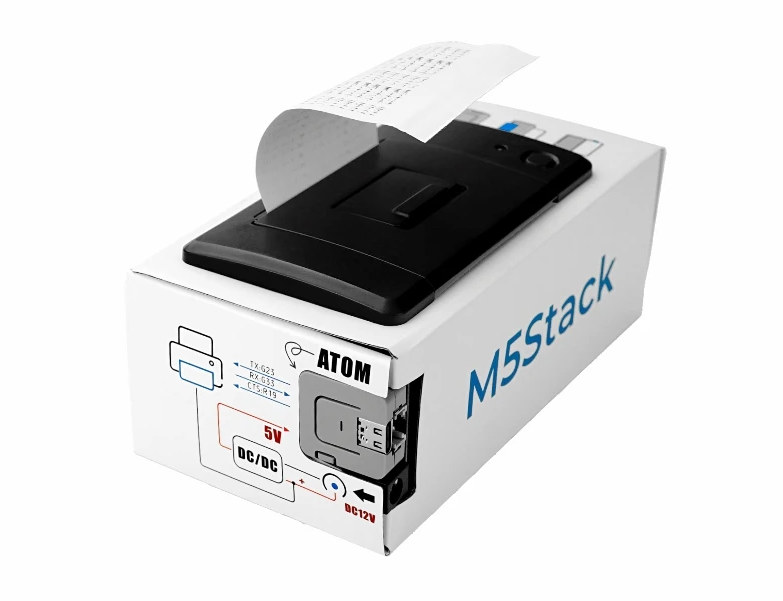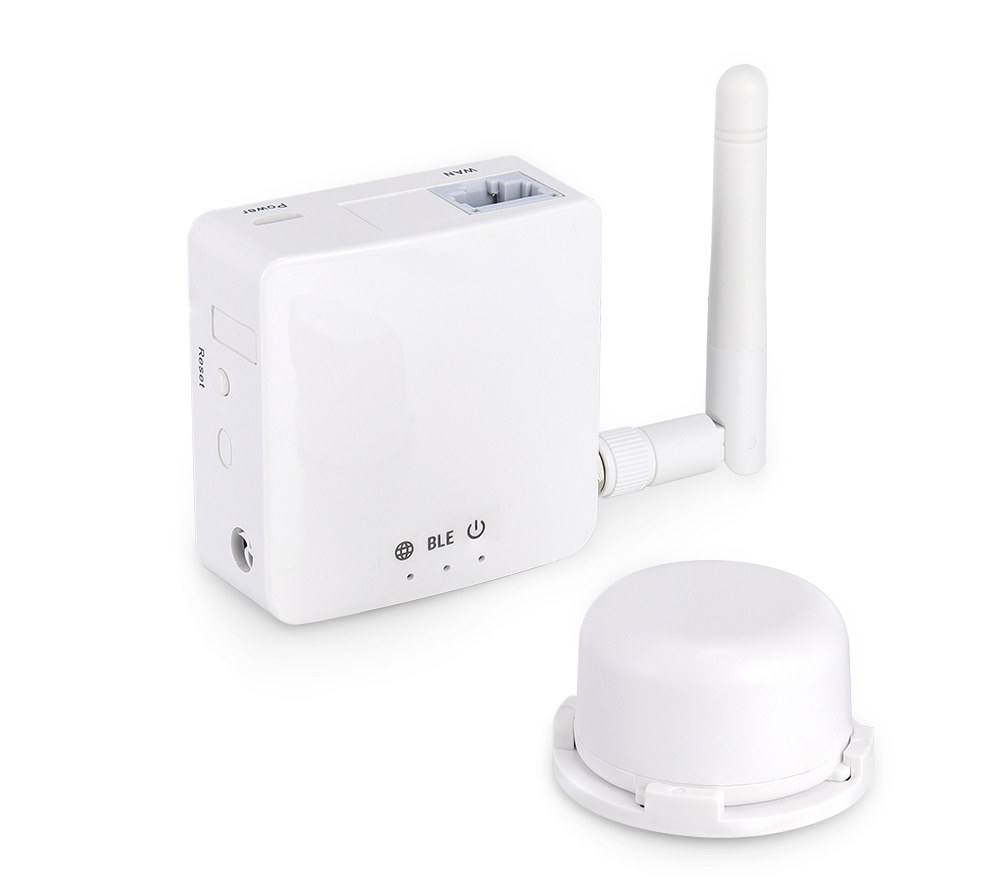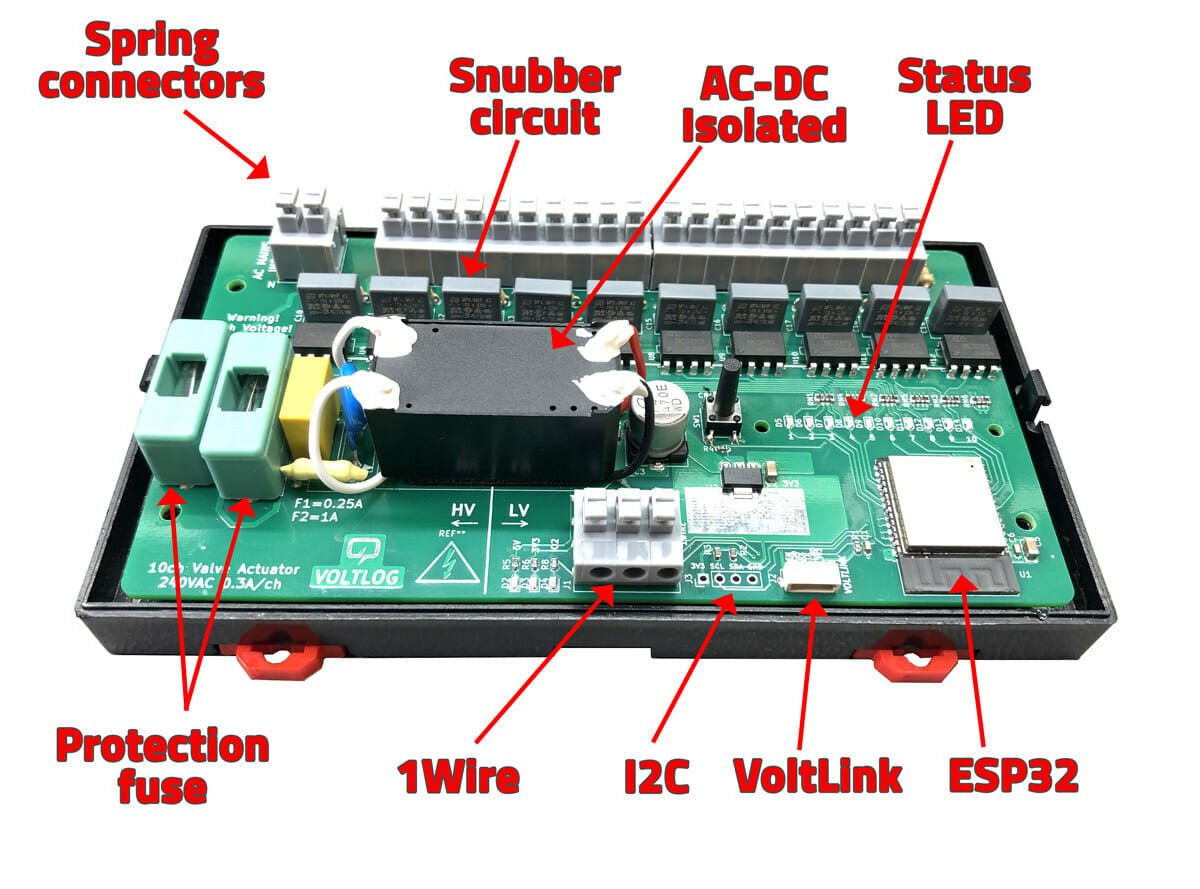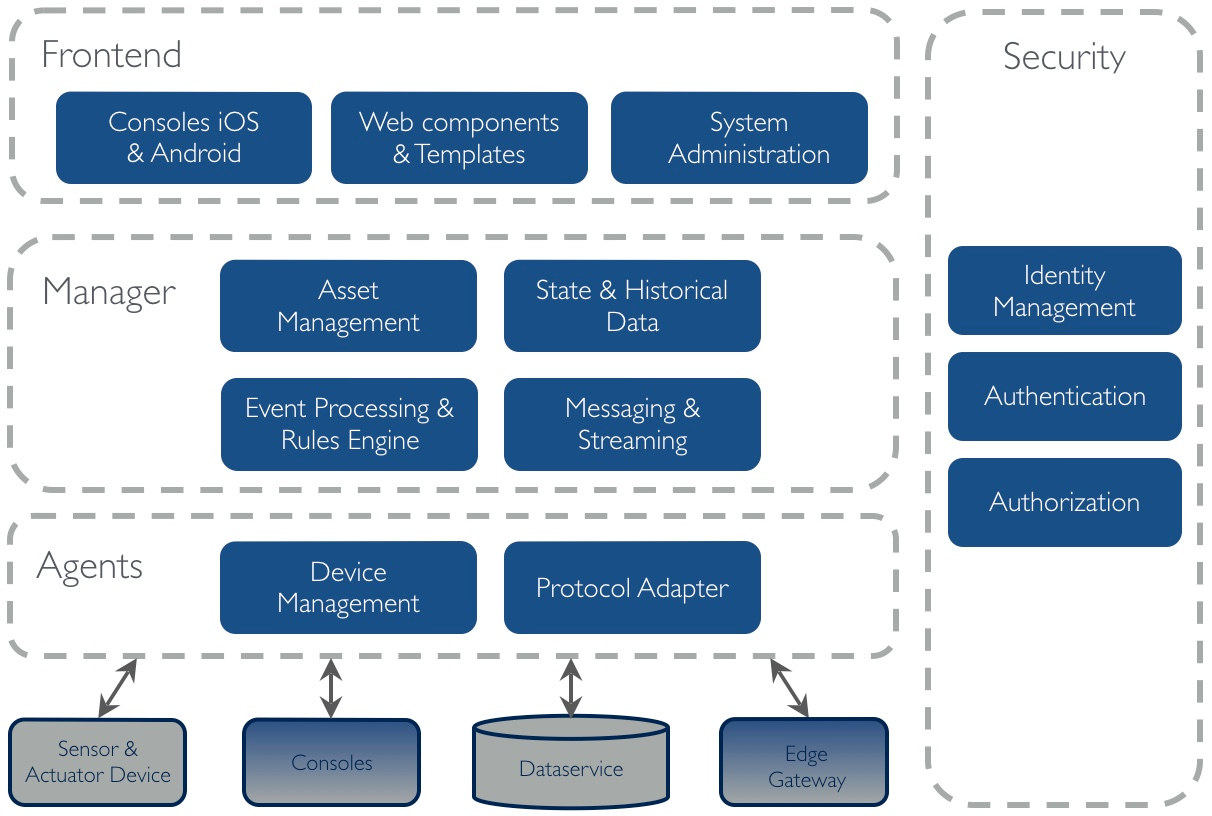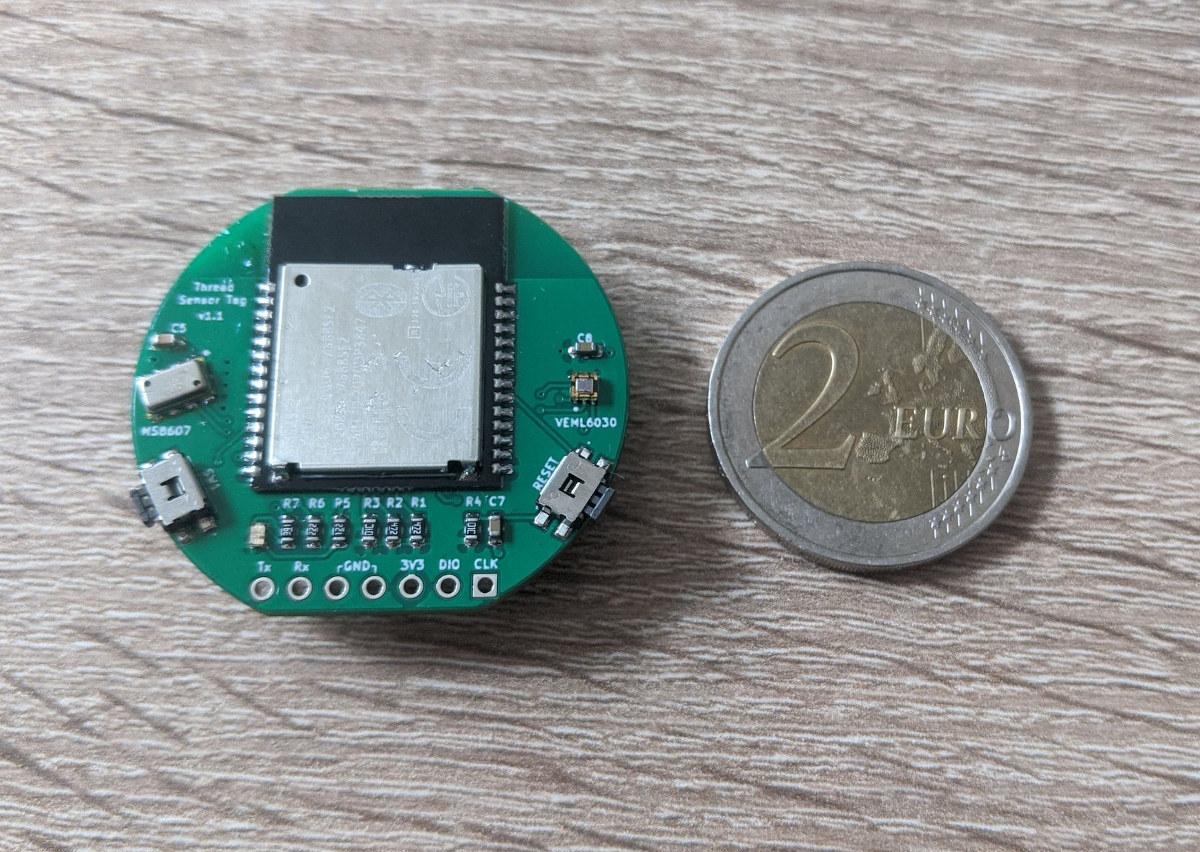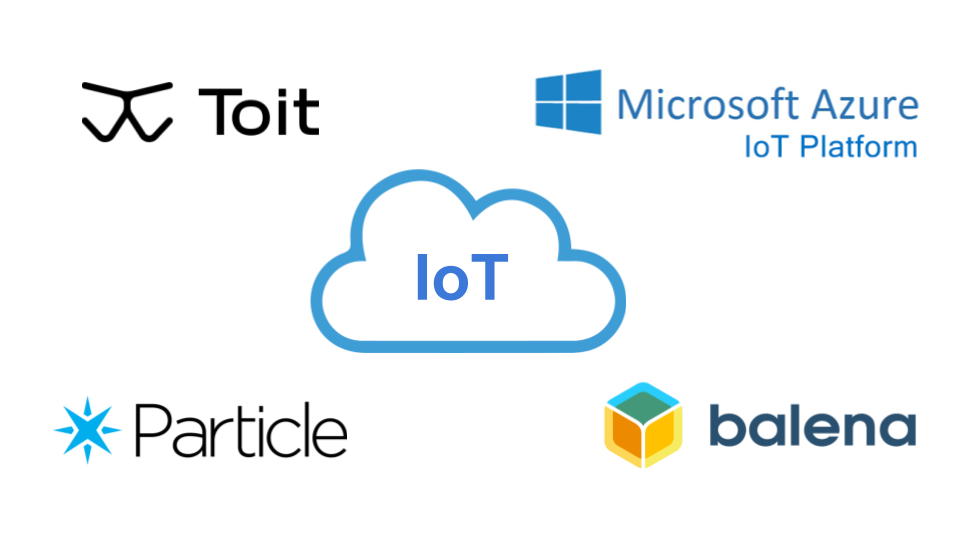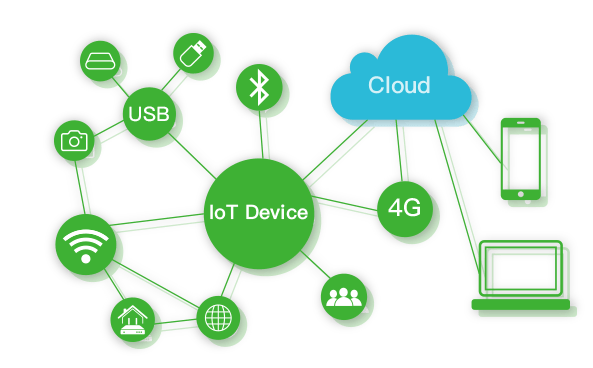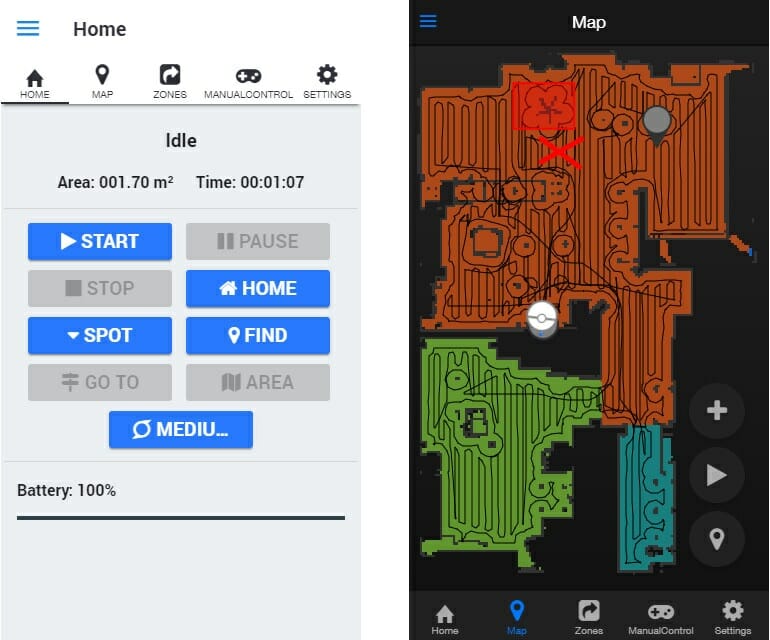The M5Stack ATOM thermal printer kit is a desktop DIY thermal printer comprised of the company’s ATOM Lite IoT controller equipped with ESP32-Pico-D4 system-in-package and a 58mm thermal printer housed in a cardboard package. The printer can print text, graphics, barcodes, or QR code printings, and the pre-installed firmware offers two modes of operation with “AP Connect Print” where the printer is seen as an access point and can be controlled with a smartphone or computer from a web browser, and the “MQTT Notifications” mode that prints the content of MQTT messages. Highlights of the ATOM thermal printer kit: M5Stack ATOM Lite IoT controller with ESP32-Pico-D4 WiFi and Bluetooth SiP fitted with 4MB Flash 58mm thermal printer connected over UART (9600 bps 8N1) Supports for text/graphics/BarCode/QRCode Speed – 60mm/s 203dpi 8 dots/mm up to 384 dots per line Connectivity over WiFi AP hotspot connection, web-controlled printing Printing content sent via […]
GL.inet GL-S10 – A compact BLE to MQTT IoT Gateway
GL.inet is better known for its WiFi routers, but the company’s latest model, the GL-S10, can not be used as a WiFi access point, and instead, the ESP32 powered device acts as a BLE to MQTT IoT gateway over Ethernet or WiFi. The gateway will gather data from Bluetooth LE devices such as beacons, and be used in warehouses, shopping malls, airports, exhibition halls, tourist attractions, etc… for personnel management, asset management, environmental monitoring, indoor navigation, and more. GL.inet GL-S10 specifications: SoC – Espressif ESP32-D0WD dual-core processor with WiFi and BLE connectivity System Memory – 8MB RAM (PSRAM) Storage – 4MB NOR flash Connectivity 10/100M Ethernet port IEEE 802.11 b/g/n WiFi 4 @ 2.4 GHz up to 150 Mbps; station mode only Bluetooth 4.2 LE with GAP and GATT support, can act as GATT server or GATT client MQTT connectivity to the cloud Misc – 3x LEDs (Power, Internet. BLE), […]
10-channel floor heating valve controller supports Tasmota, MQTT, Home Assistant
Voltlog has designed an open-source hardware floor heating valve controller powered by an ESP32 WiFi module making it compatible with Tasmota open-source firmware, and by extension MQTT protocol and Home Assistant automation framework. The board can control up to 10 valves triac controlled outputs and spring connectors for a floor home heating system, and also offers a one-wire srping connector, an I2C header, and safety features with two fuses, although it’s obviously not UL nor TUV certified. Voltlog decided to design his own board instead of buying off-the-shelf solutions because of the high price of such products and the lack of open-source firmware for integration into a home automation server powered by Home Assistant. You can flash firmware to the ESP32 either through a VoltLink USB to Serial converter or you can use your own USB to serial converter module through the on-board JST-SH 1.0mm pitch 6 pin connector. This […]
OpenRemote fully open-source IoT platform targets OEMs and DIY projects
OpenRemote claims to be a 100% open-source IoT platform suitable for DIYs as well as OEMs. The asset management platform can help with the tracking of vehicle fleets, energy systems, or crowds, help to build smart cities, smart buildings, smart airports, and more. While most cloud IoT platforms rely on open-source tools, the software hosted on the providers’ servers is usually closed-source as we’ve seen in our comparison between Microsoft Azure IoT, Balena, and Particle, but OpenRemote is different will the full stack being released under an AGPLv3 open source license. OpenRemote 3.0 software is comprised of four main blocks: The Frontend is comprised of Consoles (native iOS and Android apps), Web components and Templates, as well as a System Administration interface used to create dashboards and control panels. Manager – headless Java application to capture the current asset states and includes Asset Management, State & Historical Data, Event Processing […]
Coin cell-powered OpenThread sensor board can send data every 20 seconds for three years
Monkey Store’s Thread Sensor Tag is a pressure, humidity, temperature, and light sensor that connects to the OpenThread network, and is capable of transmitting MQTT/UDP data every 20 seconds over a period of around three years from a single coin cell battery. As a reminder, OpenThread is an implementation of the Thread IoT network protocol that was unveiled in 2016 by Nest Labs (now Google/Alphabet). This has not been widely used so far, but we did write about MKR SharkyPro development board with OpenThread support via STMicro STM32WB5MMG wireless module earlier this year, and Monkey Store is telling us both Google and Apple are working on devices with support for the IoT protocol. Thread Sensor Tag specifications: Wireless module – Minew MS88SF2 based on Nordic Semi nRF52840 multi-protocol 2.4GHz wireless Cortex-M4 microcontroller Sensor VEMLS6030 I2C light sensor MS8607 pressure, humidity, and temperature sensor I/Os – 7x through holes with Tx/Rx, […]
Microsoft Azure IoT, Balena, Particle, or Toit – Choosing the Right IoT Development Platform
With the ongoing fourth Industrial Revolution (Industry 4.0), IoT technologies are playing a major role in automating industrial processes. Integrating existing systems with IoT results in an intelligent solution that focuses more on providing better adaptability and resource efficiency. If you start building such systems from scratch while ensuring reliability and other factors, it will surely take a lot of research and time. This is where an IoT development platform steps in to save your time and makes things a lot easier. The main idea behind these platforms is to avoid reinventing the wheel and to provide standardized functions and features, so you don’t waste your time implementing something that someone has already done for you. You can collect data, control and manage apps and connect to their cloud services for better machine-to-machine communication. This article will look at some modern IoT development platforms and finally compare them to help […]
HybridOS is an open-source operating system designed for smart IoT devices and cloud computing environment
As I wrote about the “Summer 2021 of Open Source Promotion Plan” earlier, I noticed a new open-source operating system called HybridOS described as “totally new” and designed for “smart IoT devices and cloud computing environment”. It’s actually more of an ecosystem than an operating system, as it offers three main components with a device side running on devices running Linux kernel or another POSIX-compatible kernel, a server side running on servers in the cloud, and a client side to manage the cloud and devices from Windows, Linux distributions, iOS, or Android. HybridOS Device Side relies on several open-source projects including: hiWebKit, the HybridOS derivative of WebKit: hiACEJS, the HybridOS derivative of OpenHarmony ACELite hiViewRenders, the renderers for hiview tag of hiWebKit hiShell, the app running environment (the shell) Various Graphics stacks including hiMesa, the HybridOS derivative of Mesa hiCairo, the HybridOS derivative of Cairo: hiDRMDrivers, DRM Drivers for HybridOS […]
Valetudo is a cloud-free web interface for robot vacuum cleaners
In my review of Kyvol Cybovac S31 LDS smart robot vacuum cleaner, I noted that app permissions meant both the map of your house and GPS coordinates may be sent to the cloud. But it was pointed out to me that earlier LDS robot vacuum cleaners from Roborock/Xiaomi were supported by Valetudo project that removes the need to connect to the cloud, and implements a mobile-friendly web interface as well as MQTT support for integration with Home Assistant or Node-RED. The project is not a custom firmware for the robots, and instead, the stock firmware is patched with Valetudo which developers describe as an “alternative App implementation + mock cloud which runs on the robot itself.” The good news is that you don’t necessarily need to teardown your vacuum cleaner to root it and install Valetudo, but it will depend on the model, and manufacturing date/firmware installed. The less good […]


